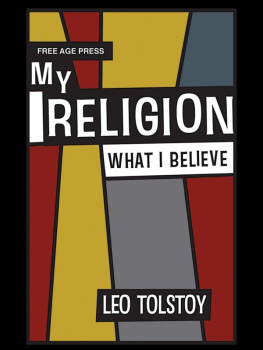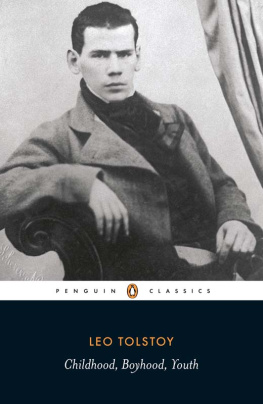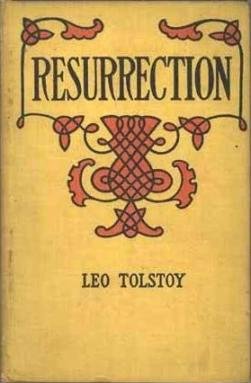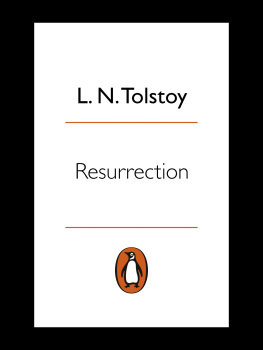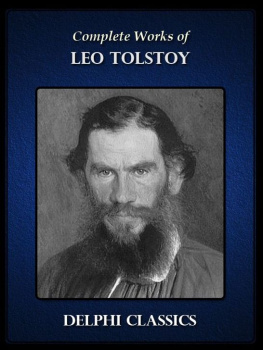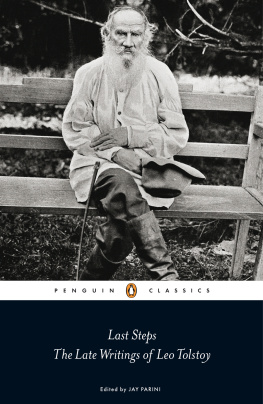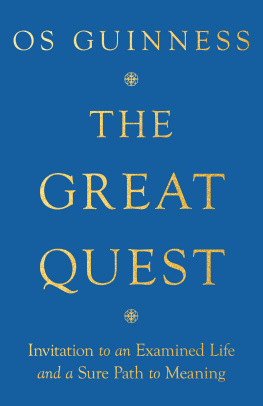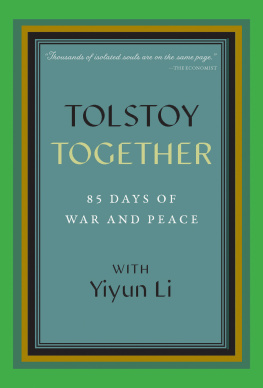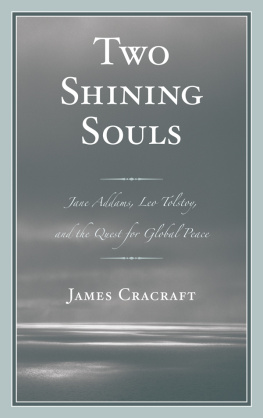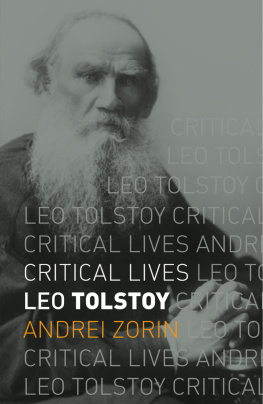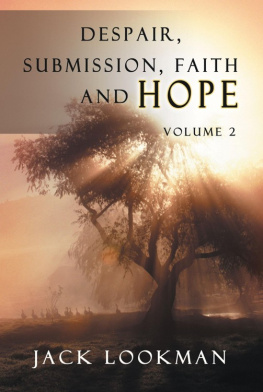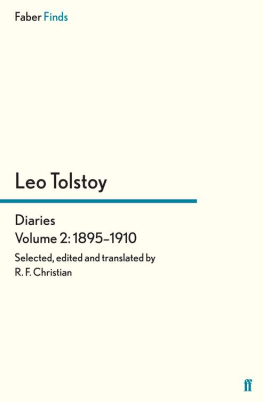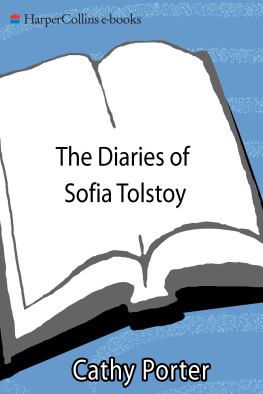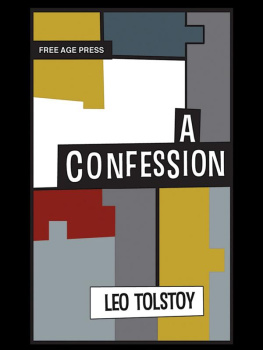My Religion What I Believe
by
Leo Tolstoy
My Religion What I Believe
White Crow Books is an imprint of
White Crow Productions Ltd
PO Box 1013
Guildford
GU1 9EJ
www.whitecrowbooks.com
This edition copyright 2009 White Crow Books
All rights reserved. Unauthorized reproduction, in any manner, is prohibited.
Text design and eBook production by Essential Works
www.essentialworks.co.uk
ISBN 978-1-907355-23-3
eBook ISBN 978-1-907355-70-7
Religion & Spirituality
Distributed in the UK by
Lightning Source Ltd.
Chapter House
Pitfield
Kiln Farm
Milton Keynes MK11 3LW
Distributed in the USA by
Lightning Source Inc.
246 Heil Quaker Boulevard
LaVergne
Tennessee 37086
Translators Preface
To one not familiar with the Russian language the accessible data relative to the external life of Leo Nikolaevich Tolstoy, the author of this book, are, to say the least, not voluminous. His name does not appear in that heterogeneous record of celebrities known as The Men of the Time , nor is it to be found in M. Vapereaus comprehensive Dictionnaire des Contemporains. And yet Count Leo Tolstoy is acknowledged by competent critics to be a man of extraordinary genius, who, certainly in one instance, has produced a masterpiece of literature which will continue to rank with the great artistic productions of this age.
Perhaps it is enough for us to know that he was born on his fathers estate in the Russian province of Tula, in the year 1828; that he received a good home education and studied the oriental languages at the University of Kasan that he was for a time in the army, which he entered at the age of twenty-three as an officer of artillery, serving later on the staff of Prince Gortschakof; and that subsequently he alternated between St. Petersburg and Moscow, leading the existence of super-refined barbarism and excessive luxury, characteristic of the Russian aristocracy. He saw life in country and city, in camp and court. He was numbered among the defenders of Sebastopol in the Crimean War and the impressions then gathered he used as material for a series of War Sketches that attracted attention in the pages of the magazine where they first appeared; and when, a little later, they were published in book form, their author, then twenty-eight years of age, acquired at once a wide popularity. Popularity became fame with the publication, also in 1856, of Childhood and Youth , remarkable alike for its artless revelations concerning the genesis and growth of ideas and emotions in the minds of the young, for its idyllic pictures of domestic life, and for its graceful descriptions of nature. This was followed by The Cossacks , a wild romance of the steppes, vigorously realistic in details, and, like all of Count Tolstoys works, poetic in conception and inspired with a dramatic intensity. In 1860 appeared War and Peace , a historical romance in many volumes, dealing with the Napoleonic invasion of 1812 and the events that immediately followed the retreat from Moscow.
According to M. C. Courriere, it was seized upon with avidity and produced a profound sensation.
The stage is immense and the actors are innumerable; among them three emperors with their ministers, their marshals, and their generals, and then a countless retinue of minor officers, soldiers, nobles, and peasants.
We are transported by turns from the salons of St. Petersburg to the camps of war, from Moscow to the country. And all these diverse and varied scenes are joined together with a controlling purpose that brings everything into harmony. Each one of the prolonged series of constantly changing tableaux is of remarkable beauty and palpitating with life.
Pierre Besushkof, one of the three heroes of War and Peace , has, rightly or wrongly, long been regarded as in some respects an autobiographical study, but the personal note is always clearly perceptible in Count Tolstoys writings, if we are to believe the reports of the enthusiastic purveyors of literary information who have made known some of their many attractive qualities. It is plain also that a common purpose runs through them all, a purpose which only in the authors latest production finds full expression. There are hints of it in Childhood and Youth ; in War and Peace , and in a subsequent romance, Anna Karenin , it becomes very distinct. In the two works last named Count Tolstoy is pitiless in his portrayal of the vices and follies of the wealthy, aristocratic class, and warm in his praise of simplicity and unpretending virtue. Pierre Besushkof is represented as the product of a transition period, one who sees clearly that the future must be different from the past, but unable to interpret the prophecies of its coming. M. Courriere speaks of him very happily as an overgrown child who seems to be lost in a wholly unfamiliar world.
For a time Pierre finds mental tranquillity in the tenets of freemasonry, and the author gives us a vivid account, humorous and pathetic by turns, of the young mans efforts to carry the newly acquired doctrines into practice. He determines to better the condition of the peasants on his estates; but instead of looking after the affair himself, he leaves the consummation of his plans to his stewards, with the result that the cleverest among them listened with attention, but considered one thing only, how to carry out their own private ends under the pretence of executing his commands. Later on we are shown Pierre wandering aimlessly about the streets of burning Moscow, until taken into custody by the French. Then he learns the true meaning of life from a simple soldier, a fellow prisoner, and thereby realizes that safety for the future is to be obtained only by bringing life to the standard of rude simplicity adopted by the common people, by recognizing, in act as well as in deed, the brotherhood of man.
We cannot here enter into the question as to whether this mental attitude, by no means unusual among Russians of cultivation and liberality, arises from the lack of social gradation between the noble and the peasant, which forces the social philosopher of rank to accept an existence of pure worldliness and empty show, or to adopt the primitive aspirations and humble toil of the tillers of the soil. At any rate, it is plain that Count Tolstoy sides with the latter. The doctrine of simplification has many adherents in Russia, and when, some time ago, it was announced that the author of War and Peace had retired to the country and was leading a life of frugality and unaffected toil in the cultivation of his estates, the surprise to his own countrymen could not have been very great. In this book he tells us how the decision was formed. He bases his conclusions on a direct and literal interpretation of the teachings of Jesus as expressed in the Sermon on the Mount.
The interpretation is not new in theory, but never before has it been carried out with so much zeal, so much determination, so much sincerity, and, granting the premises, with logic so unanswerable, as in this beautiful confession of faith. How movingly does he depict the doubts and fears of the searcher after the better life; how impressive his earnest inquiry for truth; how inspiring his confidence in the natural goodness, as opposed to the natural depravity of man; how convincing his argument that the doctrine of Jesus is simple, practicable, and conducive to the highest happiness; how terrifying his enumeration of the sufferings of the martyrs to the doctrine of the world; how pitiless his arraignment of the Church for its complacent indifference to the welfare of humanity here in this present stage of existence; how sublime his prophecy of the golden age when men shall dwell together in the bonds of love, and sin and suffering shall be no more the common lot of mankind ! We read, and are thrilled with a divine emotion; but which of us is willing to accept the truth here unfolded as the veritable secret of life?

